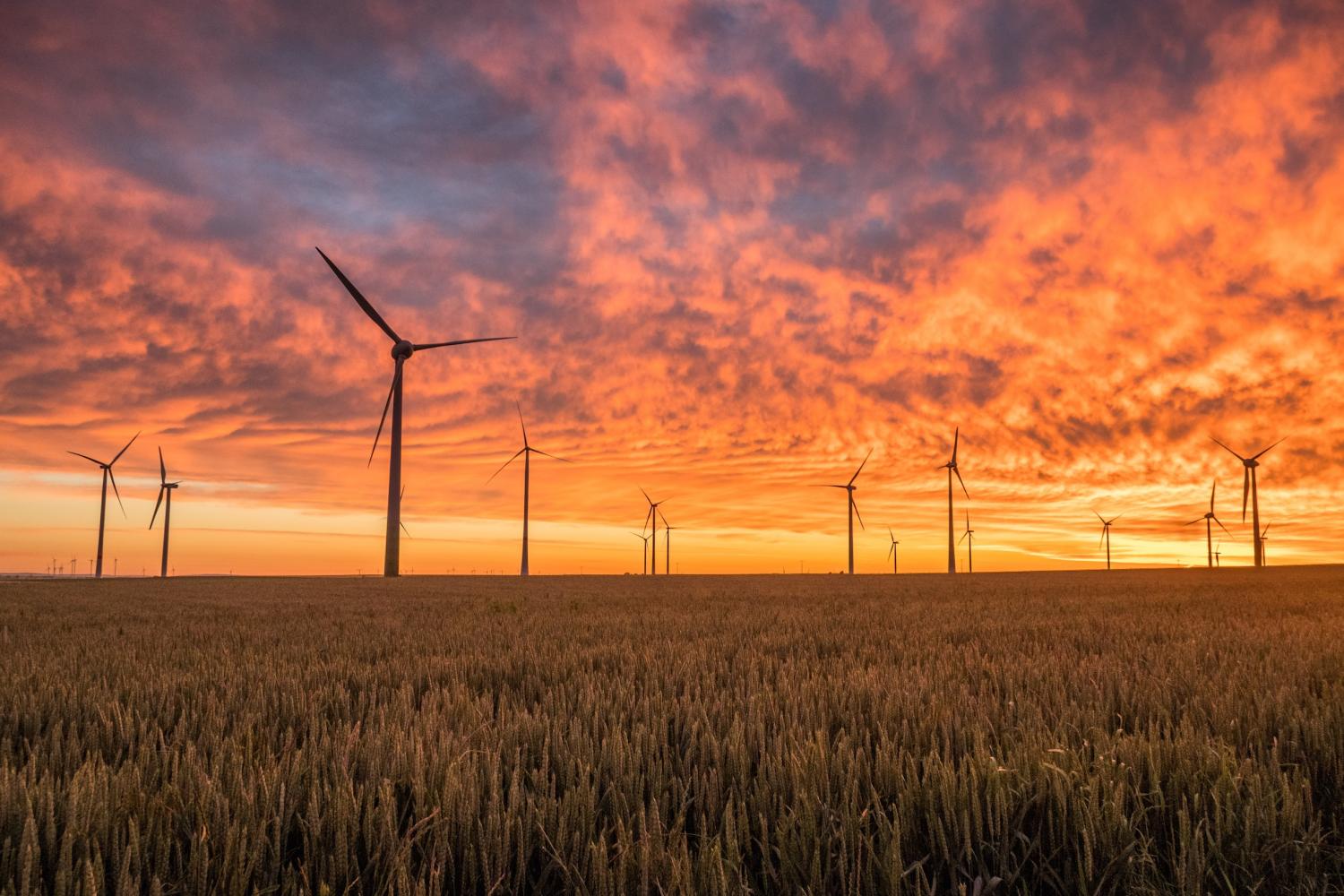
Now that wind energy has gone mainstream, the big challenge is how to squeeze the most kilowatts out of a wind turbine. The task is more complicated than simply increasing the size and efficiency of the turbine. People—and businesses—need electricity when they need it, but the wind blows when it will. The result can be an undersupply of wind energy during peak demand periods and an oversupply at other times, especially at night.
Until recent years, batteries and other energy storage systems were too expensive to help bridge the mismatch between supply and demand. However, more economical technology is coming online, and it's having a powerful impact on both the wind and solar energy markets.
Meeting the wind energy challenge
Idaho-based KORE Power is one company tapping into the potential for scaling up the global wind industry through energy storage.
Lindsay Gorrill, CEO and director of KORE Power, explains that energy storage can help spur investor interest in wind farms, because it can significantly reduce the amount of time that wind turbines are idled or operating at a lower capacity due to oversupply.
“When you drive by a wind turbine and you see only one (or none) running, it means they are not utilizing the wind. Storage enables you to utilize that large capital you’ve spent,” Gorrill explains.
To be clear, energy storage is just one cog in the many gears of grid management, so there are other considerations in play. Nevertheless, the basic idea is that investment in a wind farm is more attractive when the capital is sunk into equipment that creates energy more of the time.
Estimates vary by a wide amount, but energy storage has the potential to enable wind farms to operate consistently at close to 100 percent capacity. Without energy storage, some wind farms barely operate in the double digits.
Bigger and better wind turbines
The benefits are coming into sharper focus not only because energy storage costs are falling, but also because wind turbine technology is improving.
The U.S. is already dotted with wind farms that are operating with older, less efficient turbines. Existing wind farm owners are seizing the opportunity to re-power their wind turbines with new technology. That provides an opportunity to scale up the energy storage component as well.
Gorrill also notes that energy storage technology, like wind technology, is evolving rapidly. Until recently, for example, lithium-ion battery technology has focused primarily on the electric vehicle market. That means finding a delicate balance between cost, efficiency, size and weight. In contrast, the stationary energy storage field can focus primarily on cost and efficiency.
KORE Power’s Mark 1 utility-scale battery illustrates the difference in approaches between mobile and stationary energy storage, and the company is already keeping an eye out for future iterations of the technology.
Energy storage is replacing gas
The scaling-up of wind (and solar) capacity also has direct implications for the United States' reliance on gas power plants.
In recent years, grid stakeholders have relied on building new gas “peaker” plants to provide extra electricity during high demand periods. Now, the preference is shifting to building energy storage facilities instead of gas peaker plants.
“One of our biggest opportunities for storage is the peaker plant," Gorrill explains. "Every utility in the world has one. It’s usually gas or coal, but if you take that peaker plant and replace it with batteries, you can charge it at night. What’s happening is that the battery component of these platforms is economically viable enough to work. We don’t need a lot of subsidies.”
Storage is generally source-neutral, meaning that a battery could be recharged through fossil fuels or nuclear power as easily as renewables. Nevertheless, the falling cost of both wind and solar provide renewables with an important bottom line advantage.
In addition, cities and states with aggressive renewable energy goals are pushing the movement into wind and solar storage, and away from gas. One good example is the city of Los Angeles, which is on track to abandon a plan for building three new gas peaker plants in favor of energy storage and renewables.
More wind power for U.S. businesses
Over and above all of this activity is a new burst of development in the U.S. wind industry. Previously confined to onshore wind farms, the wind industry is finally on the verge of tapping into thousands of megawatts in U.S. offshore wind resources.
When that happens, it looks like the energy storage industry will be ready.
Image credit: Karsten Würth/Unsplash

Tina writes frequently for TriplePundit and other websites, with a focus on military, government and corporate sustainability, clean tech research and emerging energy technologies. She is a former Deputy Director of Public Affairs of the New York City Department of Environmental Protection, and author of books and articles on recycling and other conservation themes.














